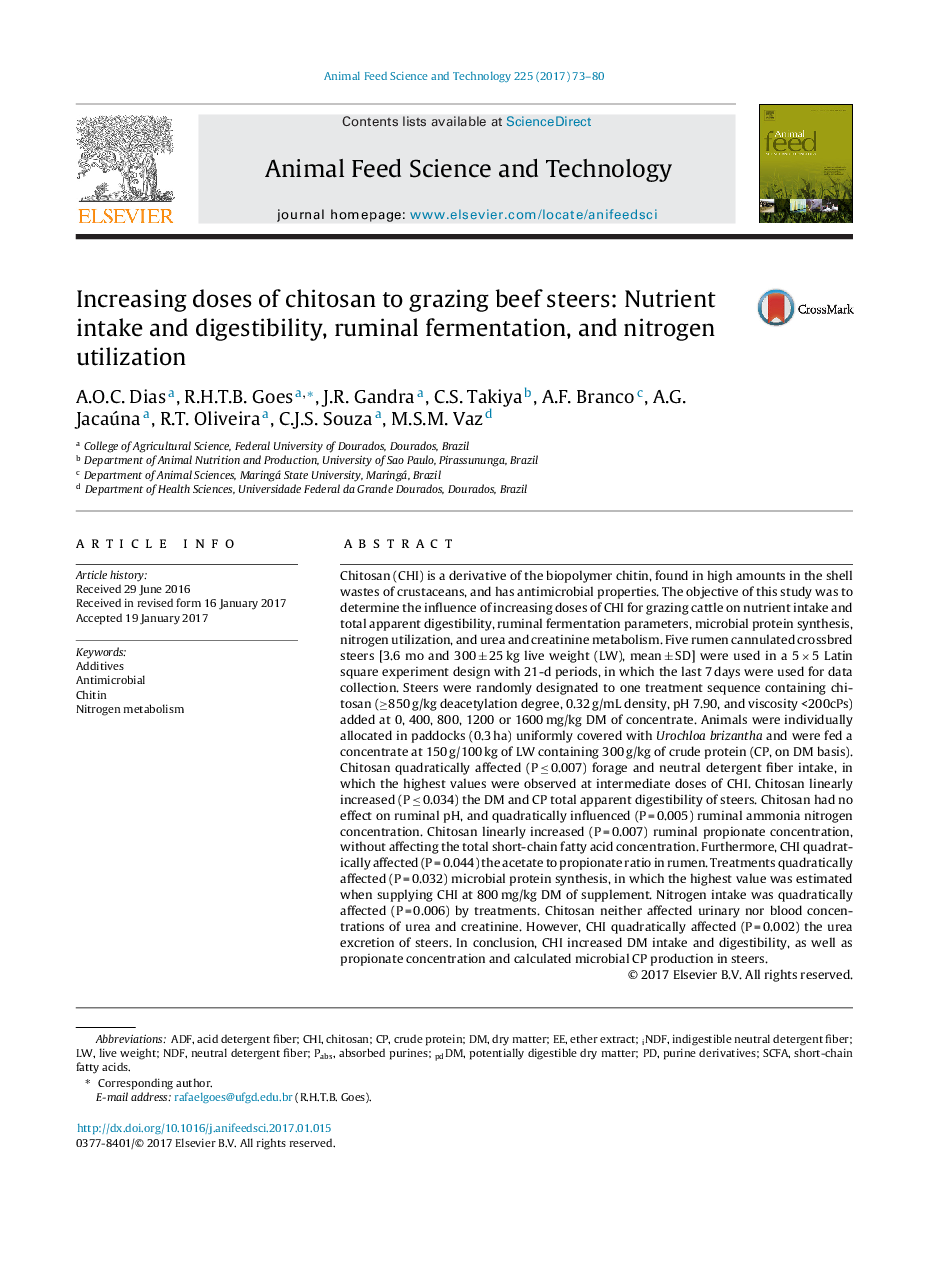| Article ID | Journal | Published Year | Pages | File Type |
|---|---|---|---|---|
| 5538757 | Animal Feed Science and Technology | 2017 | 8 Pages |
Abstract
Chitosan (CHI) is a derivative of the biopolymer chitin, found in high amounts in the shell wastes of crustaceans, and has antimicrobial properties. The objective of this study was to determine the influence of increasing doses of CHI for grazing cattle on nutrient intake and total apparent digestibility, ruminal fermentation parameters, microbial protein synthesis, nitrogen utilization, and urea and creatinine metabolism. Five rumen cannulated crossbred steers [3.6 mo and 300 ± 25 kg live weight (LW), mean ± SD] were used in a 5 Ã 5 Latin square experiment design with 21-d periods, in which the last 7 days were used for data collection. Steers were randomly designated to one treatment sequence containing chitosan (â¥850 g/kg deacetylation degree, 0.32 g/mL density, pH 7.90, and viscosity <200cPs) added at 0, 400, 800, 1200 or 1600 mg/kg DM of concentrate. Animals were individually allocated in paddocks (0.3 ha) uniformly covered with Urochloa brizantha and were fed a concentrate at 150 g/100 kg of LW containing 300 g/kg of crude protein (CP, on DM basis). Chitosan quadratically affected (P â¤Â 0.007) forage and neutral detergent fiber intake, in which the highest values were observed at intermediate doses of CHI. Chitosan linearly increased (P â¤Â 0.034) the DM and CP total apparent digestibility of steers. Chitosan had no effect on ruminal pH, and quadratically influenced (P = 0.005) ruminal ammonia nitrogen concentration. Chitosan linearly increased (P = 0.007) ruminal propionate concentration, without affecting the total short-chain fatty acid concentration. Furthermore, CHI quadratically affected (P = 0.044) the acetate to propionate ratio in rumen. Treatments quadratically affected (P = 0.032) microbial protein synthesis, in which the highest value was estimated when supplying CHI at 800 mg/kg DM of supplement. Nitrogen intake was quadratically affected (P = 0.006) by treatments. Chitosan neither affected urinary nor blood concentrations of urea and creatinine. However, CHI quadratically affected (P = 0.002) the urea excretion of steers. In conclusion, CHI increased DM intake and digestibility, as well as propionate concentration and calculated microbial CP production in steers.
Keywords
Related Topics
Life Sciences
Agricultural and Biological Sciences
Animal Science and Zoology
Authors
A.O.C. Dias, R.H.T.B. Goes, J.R. Gandra, C.S. Takiya, A.F. Branco, A.G. Jacaúna, R.T. Oliveira, C.J.S. Souza, M.S.M. Vaz,
